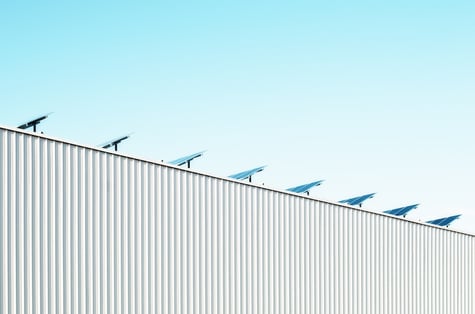 In today's world of environmental concerns and a focus on conservation, the installation of solar panels to produce electricity has become a common alternative to relying exclusively on the traditional power grid. With the cost of harnessing solar energy dropping rapidly, added with the tax and publicity benefits, it has not just become a common alternative, is has become a legitimately cost efficient alternative for homes and businesses. Below, we’ll take a look at the primary components and vocabulary associated with solar, or photovoltaic, systems.
In today's world of environmental concerns and a focus on conservation, the installation of solar panels to produce electricity has become a common alternative to relying exclusively on the traditional power grid. With the cost of harnessing solar energy dropping rapidly, added with the tax and publicity benefits, it has not just become a common alternative, is has become a legitimately cost efficient alternative for homes and businesses. Below, we’ll take a look at the primary components and vocabulary associated with solar, or photovoltaic, systems.
Solar System Connection Options
Grid solar system
Generates electricity and can also use electricity from the main grid, if needed.
Grid solar system with battery backup
Allows tapping into the main grid, if necessary. Excess power is used to charge the batteries or draw power from the battery, when needed.
Off-grid solar system
Relies solely on solar power and stored battery power.
Solar Panel System (A.K.A. Photovoltaic System)
There are several solar technologies available. The one that many residential and commercial property owners rely on is the installation of a solar panel system. Also referred to as the photovoltaic system, its purpose is the conversion of sunlight into electricity.
Photovoltaic Effect
A photovoltaic system is comprised of several components that start with the individual solar cells. These cells use the photovoltaic effect, which is a natural reaction of electrons reacting to sunlight to produce electricity.
A solar panel system also includes additional parts such as semiconductors, silicon crystals, sealing and non-reflective coatings, electrical contacts, framing and an inverter. Each of these parts has a particular job to do in order for the successful creation of producing electricity.
Solar Cells
Solar cells contain two semiconductors – the top semiconductor is negative, and the bottom semiconductor is positive. The semiconductors are usually made of crystalline silicon, which converts sunlight into electricity.
As the electrons on the negative portion are activated/energized by the sunlight, the excess electrons move to the positive portion. At this point, the electrons become mobile resulting in an electrical current. The two semiconductors will then push the current out of each solar cell to the main electrical component or load, which contains the energy created. The electrons then travel back to the positive portion of the solar cell completing the circuit. This process repeats itself continuing to generate electricity.
Solar Modules
Solar modules are made up of multiple solar cells that, when connected, create either a parallel or series circuit to produce more energy. The job of the modules is to prevent any damage and ensure the integrity of the solar cells and wiring housed within a protective module. Inside the module, additional materials are included for added protection.
Solar Panels
The combined goal of solar cells and a solar panel system is to generate adequate voltage, currents, and power. This is accomplished by the process of converting direct current (DC) into alternating current (AC) by using an inverter that will then power devices within a home or business.
A solar panel is created by wiring the protected modules together to create a designated path for the electrical current to follow. Each panel has the job of protecting the modules and directing the path of electricity.
A panel may contain several modules or only one. Once the panels are wired, they are ready for installation on the roof or on the ground.
Solar Array
While a solar panel may have one or more modules, a solar array consists of one or more solar panels. When multiple panels are used to create an array, the result is an increase in the electrical output.
With solar panel systems on this rise, it might be time to consider one for your building. We hope this article has helped shed some light on what can sometimes be the confusing and misunderstood nomenclature of solar power systems.



